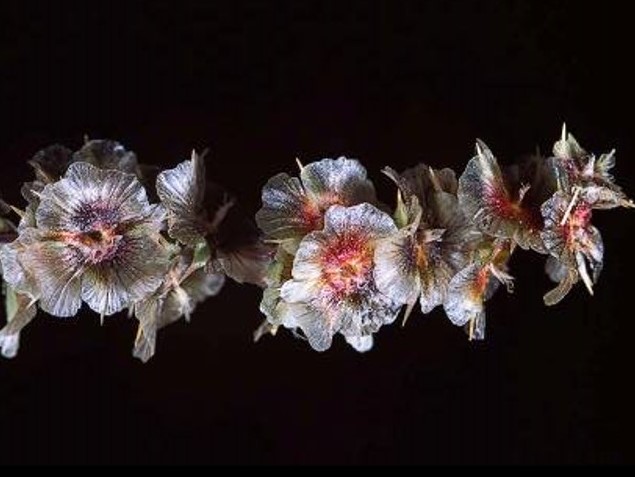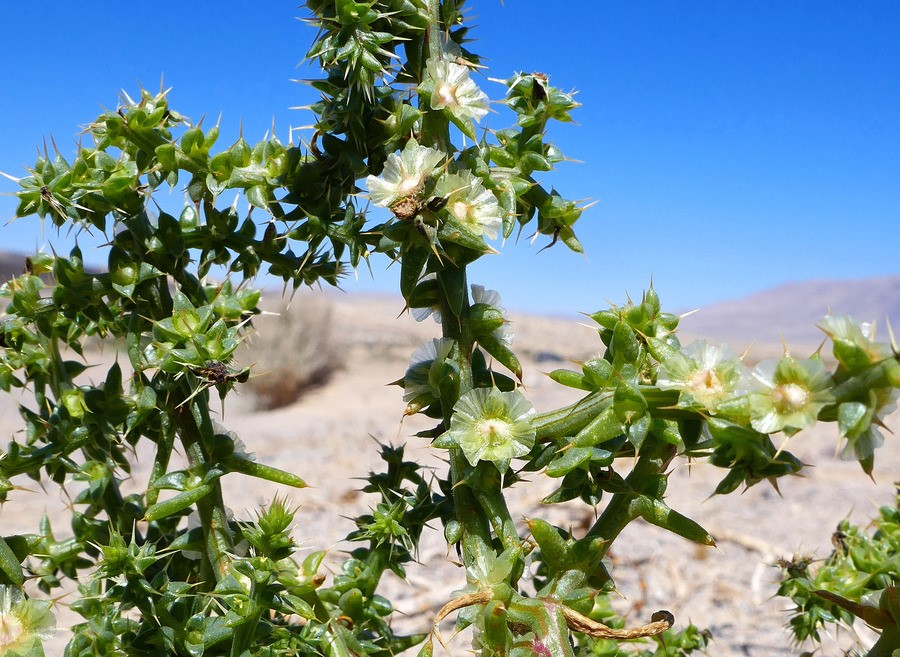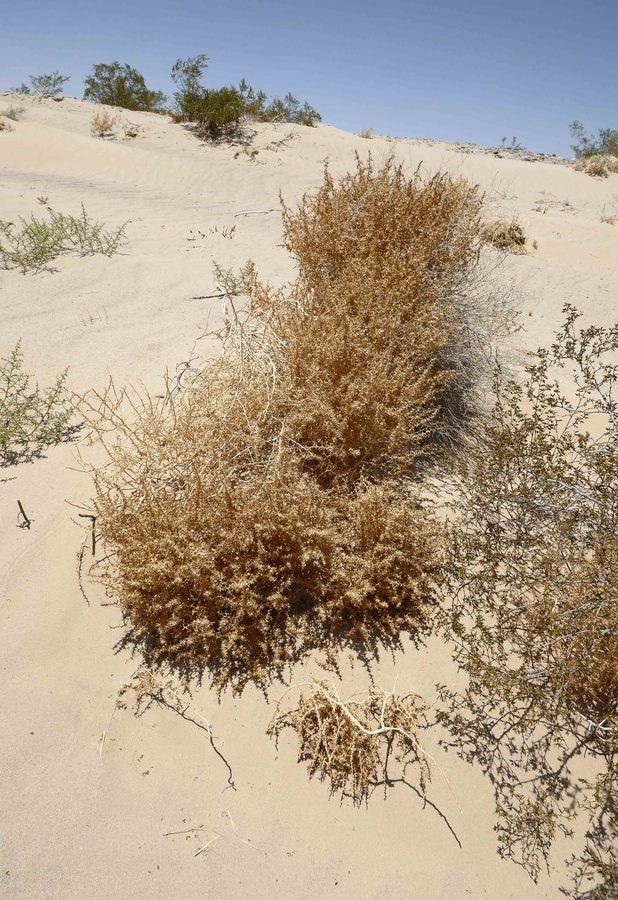Salsola paulsenii

Synonyms: formerly considered part of Russian thistle species (Salsola iberica or Salsola tragus)
Common names: barbwire Russian thistle
Salsola paulsenii (barbwire Russian thistle) is a bushy annual (family Chenopodiaceae) found throughout the Mojave Desert of California. It is native to southeastern Europe, central Asia. It prefers loose, sandy soils in desert scrub and disturbed areas, such as roadsides and cultivated fields. Barbwire Russian thistle is easily confused with Russian thistle (Salsola tragus), and the two species can hybridize, making a plant that looks like a mix between the two species. Both species reproduce using seeds which can only survive for up to two years in the soil. Cultivation can effectively control barbwire Russian thistle seedlings, but must be repeated until all seeds in the seedbank loose viability.
Cal-IPC Rating: Limited?CDFA Rating: -*?
Assessment(s)
Salsola paulsenii Plant Assessment Form - Information gathered by Cal-IPC on the impacts, rate of spread, and distribution of invasive plants in California. Does not include management information.
Special Reports
Pest Notes on Russian Thistle (From the University of California's Statewide Integrated Pest Management Program)Weed Management Notes
- Management Notes - Information on management techniques and effectiveness from the University of California Cooperative Extension’s Weed Research & Information Center.
Cal-IPC Newsletter Articles
There are no newsletter articles associated with this species yet.
Cal-IPC Symposium Presentations
Presentations are linked where available. Where a presentation is not available, find more information by reading the abstract in the Cal-IPC Symposia Archive.
- Tumbleweed species and invasion: old, new, and nascent. Ayres, Debra; Ryan, Fred; Meyer, Virginia (2024)
- Biological control agents of weeds in California: Overview of rearing, releases, and monitoring by the CDFA Biological Control Program. Moran, Patrick (2023)
- Update on recent biological control releases against invasive plants by the USDA-ARS. Moran, Patrick; Pratt, Paul; Smith, Lincoln (2022)
- Recent research on invasive weeds at the European Biological Control Laboratory (EBCL). Smith, Lincoln; Bon, Marie-Claude; Desurmont, Gaylord; Kashefi, Javid; Sforza, René; Tannières, Mélanie; Cristofaro, Massimo; Marini, Francesca; Goolsby, John; Rector, Brian; Vidovic, Biljana; Winkler, Daniel; Moran, Patrick (2018)
Other Salsola paulsenii Information
- CalPhotos - Images of plants taken mostly in California.
- Calflora - Distribution map and records of this species in California.
- CalWeedMapper - Distribution map of this species in California with ability to determine regional priorities.
- EDDMapS - Distribution of this species in North America.
- Jepson Interchange - Information on this plant's taxonomy, biology, and distribution from UC Berkeley's Jepson Herbarium.
- USDA PLANTS Database - Information on identification and distribution, with links to websites in individual states.


